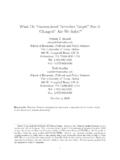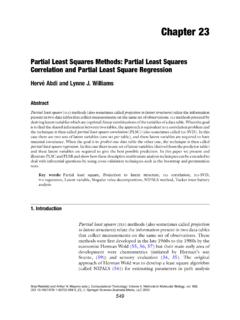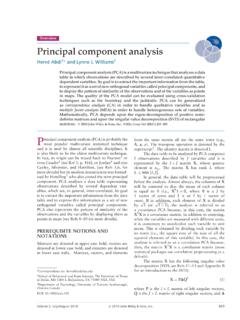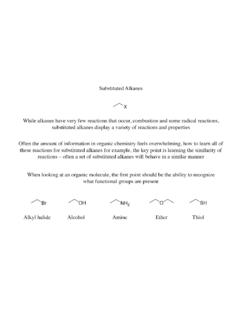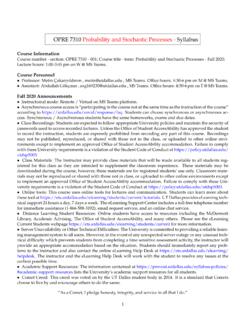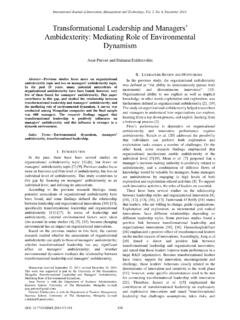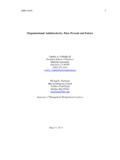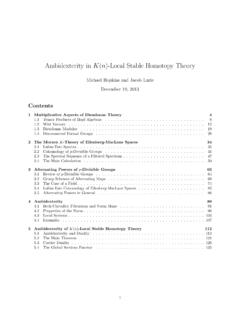Transcription of Market–political ambidexterity during institutional ...
1 Strategic Organization11(2) 205 213 The Author(s) 2013 Reprints and permissions: : political ambidexterity during institutional transitionsYuan LiShanghai Jiao Tong University, ChinaMike W Peng University of Texas at Dallas, USAC raig D MacaulayUniversity of Texas at Dallas, USAI ntroductionIn 1996, Royal Dutch Shell struck an advantageous deal to obtain a 55% stake in the Sakhalin oil fields in Eastern Russia. This was a result of Shell s superior technological and market capabilities and Russia s need for revenue during difficult institutional transitions.
2 By 2000, the picture had changed. Russia s power was considerably stronger, and Shell had mismanaged local stakeholders and governments by putting profits ahead of safety (Ray, 2008). Shell s inability to leverage previously good governmental relations would come back to haunt it. It was eventually forced to reduce its stake of the project in half (from 55% to ), and Gazprom, the Russian government-controlled oil giant, bought the remaining shares at less than market example illustrates how market capabilities are only part of the key success factors for doing business in emerging economies undergoing institutional transitions such as Russia (Puffer and McCarthy, 2011).
3 Without strong capabilities to manage government relations, firms (particu-larly, foreign ones) can find themselves in vulnerable positions with little recourse, as Shell need to pay attention to political winds and develop corresponding political capabilities is not only relevant to foreign firms such as Shell in Russia but also important to domestic firms. Case in point: the Tata Nano, the much-hyped, cheapest car that presumably would allow many Indians to become first-time car owners and create thousands of jobs, could not be made in its originally planned factory in the Indian state of West Bengal.
4 Thousands of farmers who lost their land used to build the Nano factory protested. Pressures from angry politicians forced Tata to abandon the plant and start another plant in another state, Gujarat, at a great cost. The fact that such an influential and otherwise-respected firm can mess up its political relationships domestically underscores the importance of managing political calculations during institutional OrganizationLi et !apbox: Editorial essayCorresponding author:Mike W Peng, Jindal School of Management, University of Texas at Dallas, 800 West Campbell, SM 43, Richardson, TX 75080, USA.
5 Email: Strategic Organization 11(2)transitions in emerging economies in addition to the obvious necessity to have competitive, market -based transitions are fundamental and comprehensive changes introduced to the formal and informal rules of the game that affect organizations as players (Peng, 2003: 275). The hallmark of the great institutional transitions unfolding in emerging economies is often believed to be the transitions from government control to market competition (Wright et al., 2005).Examples such as Shell in Russia and Tata in India have led us to believe that such transition to market arguments have only captured part of the essence of institutional transitions.
6 We argue that during institutional transitions, while market forces have certainly become more important, government influences are not necessarily in decline (Khanna and Yafeh, 2007; Puffer and McCarthy, 2011). Numerous foreign and domestic firms active in emerging economies have realized that their superb market capabilities may not be enough to carry the day. Many firms thus have assimilated the pervasive aspect of institutional transitions by devoting considerable resources to nurture government do firms grow during institutional transitions when forces of both governments and mar-kets are strong?
7 Our central argument is that firms grow by developing capabilities to embrace both markets and governments specifically, market political ambidexterity . Viewing market political ambidexterity as a bundle of dynamic capabilities, we contribute to the literature by articulating this important but previously underexplored transitions, nonmarket strategies, and dynamic capabilities ambidexterity literally means the ability to use one s hands equally well. Management scholars have leveraged this metaphor to deal with paradoxes, such as exploitation versus exploration (March, 1991) and efficiency versus innovation (O Reilly and Tushman, 2008).
8 Extending the ambidexterity literature, we develop the concept of market political ambidexterity in the context of institutional transitions defined as firms dynamic capabilities to manage influences from both markets and governments simultaneously. Most individuals are either right- or left-handed, and only a small percentage of individuals are truly ambidextrous. Likewise, while most firms under-stand the importance of developing dynamic capabilities to manage markets and governments, few are truly good at both this is where the tension lies.
9 Because such market political ambidexterity is valuable, rare, and hard to imitate, we argue that these important dynamic capabilities are central to a firm s success in an environment where both markets and governments play a pivotal focus on market political ambidexterity enables us to draw on and contribute to three streams of the literature. First, this article continues the line of research on institutional transitions and strategic choices (Hoskisson et al., in press; Li and Peng, 2008; Meyer et al., 2009; Peng, 2003; Peng and Heath, 1996; Wright et al.)
10 , 2005). Treating governments and markets as twin forces of a paradox, we follow Lado et al. (2008) and Smith and Lewis (2011) by leveraging the tension between these two forces. Specifically, we move beyond traditional either/or thinking and embrace both/and reasoning by articulating the strategic ambidexterity concept. We challenge the tradi-tional view of government and market forces being at opposite ends of a scale. More influence of market forces does not necessarily mean less of government forces. Therefore, a view that gives equal weight to market and government capabilities will have greater explanatory power when examining this phenomenon than the alternative view, which focuses solely on one or the , this article draws on the literature on political and nonmarket strategies (Lux et al.
